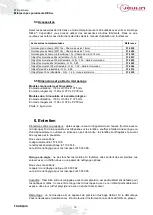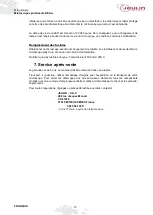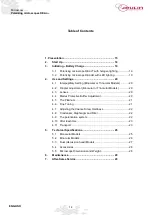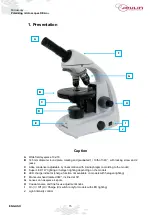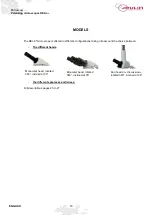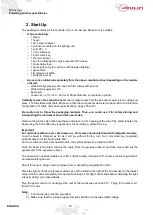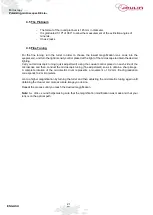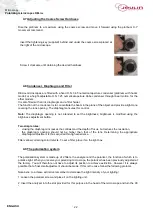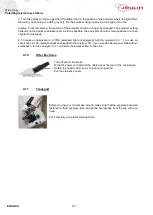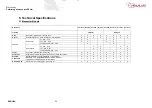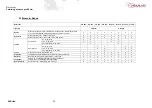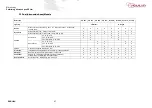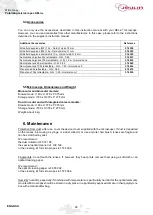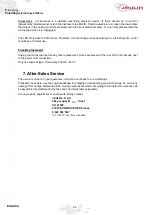
Microscopy
Polarizing microscopes DELio
®
ENGLISH
28
4.7 Adjusting the Coarse Screw Hardness
Rise the platinum to a maximum using the coarse screw and move it forward using the platinum X-Y
movement command.
Insert the tightening key (supplied) behind and under the coarse screw placed at
the right of the microscope.
Screw it clockwise until obtaining the desired hardness
4.8 Condenser, Diaphragm and Filter
DELio
®
microscopes are fitted with a fixed O.N. 0.65 numerical aperture condenser (platinum with hacks
model) or a height-adjustable O.N. 1.25 numerical aperture Abbe condenser through linear motion, for the
other models.
It is also fitted with an iris diaphragm and a filter holder.
The function of the condenser is to concentrate the beam in the plane of the object and provide a light cone
covering the lens opening. The diaphragm ensures this control.
Note:
The diaphragm opening is not intended to set the brightness; brightness is modified using the
brightness adjustment button.
Two simple rules:
- closing the diaphragm increases the contrast and the depth of focus, but reduces the resolution,
- the diaphragm opening should not be higher than that of the lens. Determining the appropriate
diaphragm adjustment is thus acquired through experience.
Filters allow correcting color defects. To set a filter, place it on the light box.
4.9 The polarization system
The polarization system is made up of 2 filters, the analyzer and the polarizer, the function of which is to
polarize light. When you receive your polarizing microscope, the polarizer has been previously adjusted at
the factory. You will therefore not have to adjust its position to achieve extinction. However it is always
possible that a final small adjustment should be made. If this is the case follow the following protocol.
Note bene: to achieve extinction remember to decrease the light intensity of your lighting!
1. Loosen the polarizer screw and place it on the lighting unit.
2. Insert the analyzer into the slot provided for this purpose in the head of the microscope and turn the 90
°.
22





